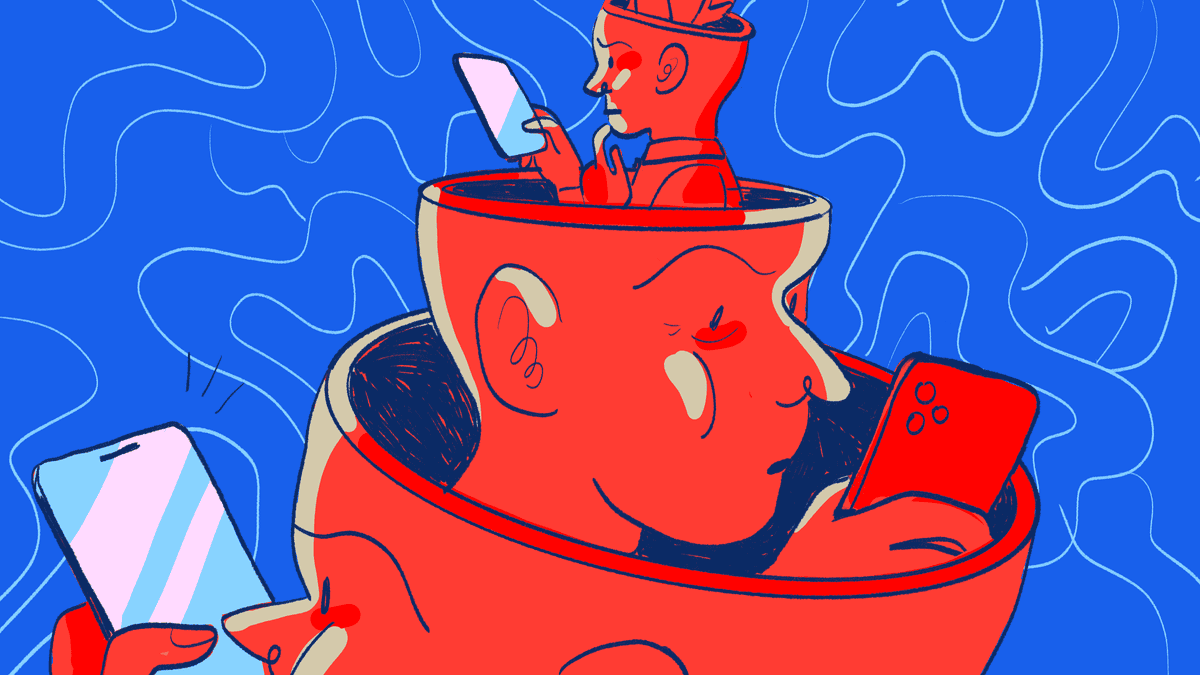แนวคิดหลัก
Addictive technology leverages dopamine to mimic the habit-forming potential of addictive substances like cocaine.
บทคัดย่อ
Addictive tech exploits dopamine pathways similar to addictive drugs, creating cravings and reinforcing behaviors. Autoplay and infinite scroll features hinder impulse control, leading to a vicious cycle of digital addiction.
ปรับแต่งบทสรุป
เขียนใหม่ด้วย AI
สร้างการอ้างอิง
แปลแหล่งที่มา
เป็นภาษาอื่น
สร้าง MindMap
จากเนื้อหาต้นฉบับ
ไปยังแหล่งที่มา
gizmodo.com
How Addictive Tech Hacks Your Brain
สถิติ
Comparing addictive tech to cocaine in terms of dopamine levels.
Impact of social media interactions on dopamine release.
Effects of autoplay and infinite scroll on user behavior.
Strategies to combat digital addiction.
คำพูด
"Addictive tech exploits dopamine pathways similar to addictive drugs."
"Autoplay and infinite scroll features hinder impulse control, leading to a vicious cycle of digital addiction."
ข้อมูลเชิงลึกที่สำคัญจาก
by Peter Sauter ที่ gizmodo.com 05-18-2023
https://gizmodo.com/addictive-technology-neuroscience-social-media-apps-1850416350
สอบถามเพิ่มเติม
How can regulations catch up with the addictive nature of technology?
Regulating the addictive nature of technology requires a multi-faceted approach. One way is through legislation that mandates transparency from tech companies regarding their design practices and the potential addictive elements in their products. This could involve requiring companies to disclose how they use algorithms to keep users engaged and addicted. Additionally, regulations can focus on limiting certain features like autoplay and infinite scroll that are known to contribute to addiction. Another aspect is enforcing age restrictions or parental controls on apps and devices to protect vulnerable populations like children from excessive exposure to addictive tech.
Is there a way for users to balance the benefits and risks of using addictive tech?
Users can take proactive steps to balance the benefits and risks associated with using addictive technology. One approach is practicing digital mindfulness by setting boundaries on screen time, taking regular breaks, and being mindful of how much time is spent on devices. Utilizing tools like app timers, do not disturb settings, or even turning screens black-and-white can help reduce the allure of constant engagement with technology. It's also essential for individuals to critically evaluate which apps or services truly add value to their lives and consider reducing usage of those that primarily serve as sources of distraction or addiction.
How can individuals protect themselves from falling into the trap of digital addiction?
To protect themselves from falling into the trap of digital addiction, individuals should be aware of their usage patterns and behaviors when interacting with technology. Setting clear boundaries around device usage, such as establishing designated "tech-free" times or areas in daily routines, can help create healthy habits. Practicing self-discipline by consciously monitoring screen time, avoiding mindless scrolling or binge-watching sessions, and seeking alternative activities for relaxation are crucial steps in preventing digital addiction. Seeking support from friends or family members for accountability purposes can also aid in breaking unhealthy tech habits.
0
